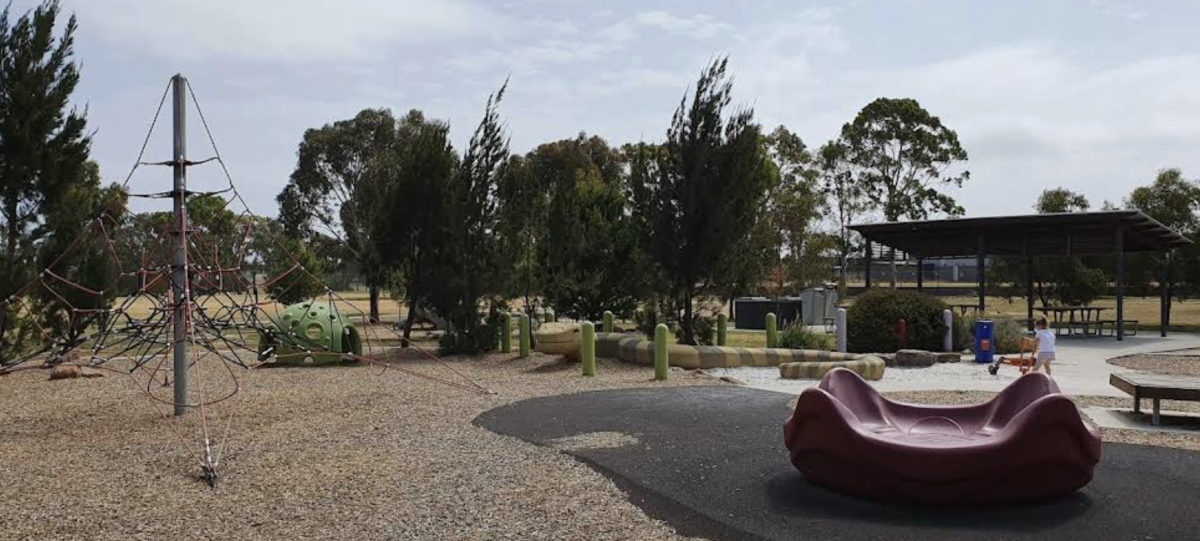
Parks are one of the best spots to get some exercise, fresh air, and even get to know your neighbours for a dose of community spirit.
Yet, a routine park renovation has taken an unexpected turn that could add to a growing concern prevalent in these public spaces.
with the discovery of asbestos during construction work at McCormack Park in Laverton. The find adds to growing concerns about asbestos contamination in Australian public spaces, following widespread issues across Sydney earlier this year.
Non-friable asbestos was 'unexpectedly' found while crews were undertaking excavation works of the picnic and play equipment in the said park.
The discovery has prompted Hobsons Bay Council to cordon off contaminated areas while specialist contractors work to remove the hazardous material safely.
What exactly was found?
The asbestos discovered at McCormack Park is classified as 'non-friable' - a term that might sound confusing but actually represents the less dangerous form of this harmful material.
Non-friable asbestos has been mixed with cement or other binding materials, making it less likely to release dangerous fibres into the air compared to its friable counterpart.
However, any disturbance during excavation work can still pose risks, which is why the site has been adequately secured and specialist contractors have been brought in to handle the removal.
Testing by authorities in 2024 found asbestos at dozens of sites across Sydney, and Hobsons Bay City Council has previously checked playgrounds in the area for asbestos. This suggests councils are increasingly vigilant about potential contamination, particularly in areas where families and older Australians enjoy outdoor activities.
Australia's asbestos legacy
Properties built or renovated before 2003 may contain asbestos, as it was widely used in construction until the late 1980s.
In 2004, Asbestos was completely banned from being used.
The McCormack Park discovery isn't an isolated incident. Sydney experienced a major asbestos crisis in 2024, involving contaminated mulch at dozens of sites, including parks, schools, supermarkets, hospitals, and housing estates.
This led to major investigations, with asbestos mulch also found in Brisbane, prompting Queensland authorities to launch their own investigations.
Understanding asbestos types
Non-friable asbestos: Mixed with cement or other hard materials, less likely to release fibres unless disturbed
Friable asbestos: Can crumble easily and release dangerous fibres into the air
Note that both types require professional removal when disturbed during construction or renovation work.
Health considerations for park users
The good news for regular McCormack Park users is that the material was discovered during excavation work before the public could be exposed.
The contaminated areas remain fenced off, while the rest of the park remains safe for visitors.
For older Australians who may have concerns about past asbestos exposure, this incident serves as a reminder of the importance of proper testing and removal protocols. Before any building work begins, it's essential to call professionals to check for the presence of asbestos.
The project continues safely
Despite the unexpected discovery, Hobsons Bay Council remains committed to completing the McCormack Park upgrade. The $2,053,272.55 renovation project is still scheduled for completion in early 2026, though the asbestos removal work will naturally extend the timeline.
'Council officers continue to work with the contractor to clear the site in accordance with relevant EPA guidelines.'
The council covers suburbs including Altona, Brooklyn, Laverton, Newport, Seabrook, Seaholme, South Kingsville, Spotswood, Williamstown and Williamstown North, where many residents have lived through decades of industrial activity and may have their own concerns about asbestos exposure.
Looking ahead
This incident at McCormack Park represents both a challenge and a success story. While discovering asbestos during any project is concerning, the fact that it was found during proper excavation procedures—rather than being missed and potentially causing future problems—indicates that safety systems are working effectively.
Professional asbestos removal services operate across Victoria, and despite being banned from use in Australia, asbestos can still be found in thousands of building materials and products. This reality means continued vigilance is essential as Australia continues upgrading and renovating its infrastructure.
For Laverton residents and park users across Melbourne's west, the message is clear: safety comes first, even if it means temporary inconvenience during what should have been a straightforward park upgrade.
The discovery at McCormack Park serves as a reminder that Australia's asbestos legacy continues to surface in unexpected places. However, it also demonstrates that proper safety protocols and community transparency play a crucial role in protecting public health when such discoveries occur.
What do you think about how councils should handle asbestos discoveries during public works projects? Have you encountered similar situations in your local area? Share your experiences in the comments below.
Primary source







